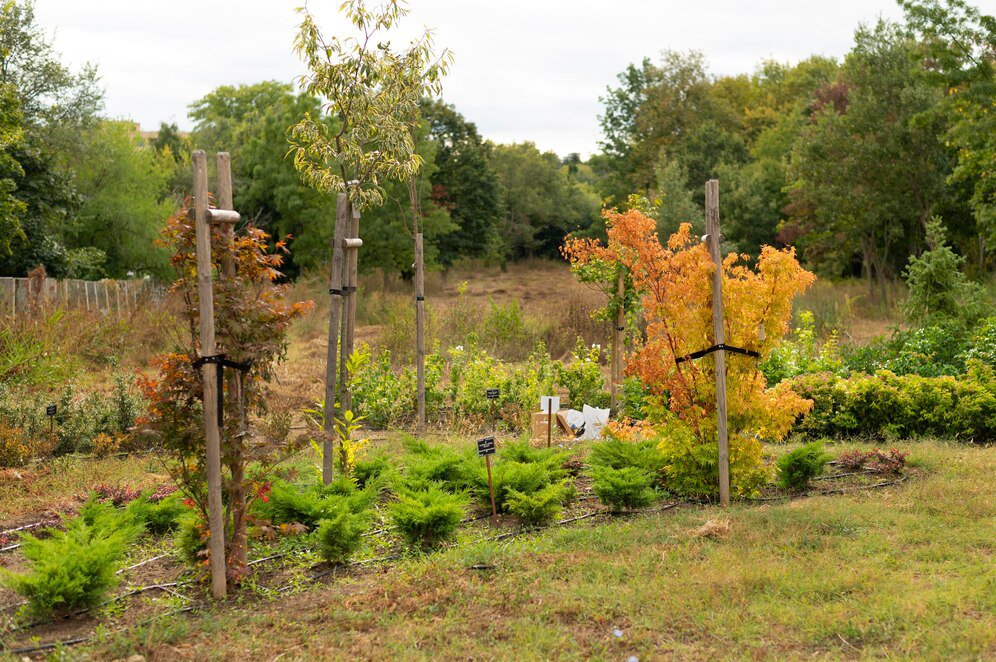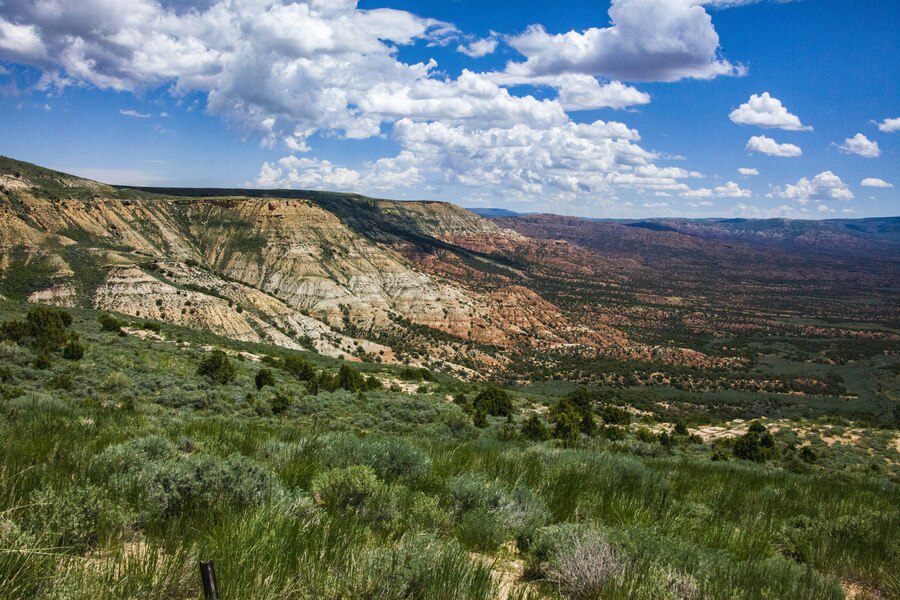In the heart of nature-rich Prescott, Arizona, lies a burgeoning movement toward harmonizing urban landscapes with the diverse wildlife that inhabits the region. In our quest for sustainable living, the concept of wildlife-friendly landscaping has emerged as a beacon of hope, offering a bridge between human habitation and the natural world. In this blog series, “Designing a Wildlife-Friendly Habitat: Prescott Landscaping for Biodiversity,” we delve into the art and science of creating lush, biodiverse environments within our own backyards.
From attracting native pollinators to providing essential habitats for birds and small mammals, the principles of wildlife-friendly landscaping offer multifaceted benefits. Join us as we explore the symbiotic relationship between thoughtful design, native plantings, and the preservation of local ecosystems. Whether you’re a seasoned gardener, an aspiring environmentalist, or simply a lover of nature, there’s something for everyone in the journey toward cultivating a wildlife-friendly habitat in Prescott’s unique landscape.
The Key to Successful Wildlife-Friendly Landscaping in Prescott

Prescott, with its diverse ecosystems and rich biodiversity, offers unique opportunities for homeowners to create wildlife-friendly landscapes. Designing such landscapes not only enhances the beauty of properties but also plays a vital role in supporting local wildlife populations and promoting ecosystem health. Understanding the key principles and practices of wildlife-friendly landscaping is crucial for homeowners looking to make a positive impact on the environment while enjoying the natural beauty of their surroundings.
Understanding Biodiversity in Prescott: Prescott boasts a remarkable variety of flora and fauna, ranging from desert-adapted species to mountain-dwelling wildlife. To create successful wildlife-friendly landscapes, homeowners must first understand the importance of biodiversity in supporting healthy ecosystems.
By preserving and enhancing biodiversity in their yards, homeowners can contribute to the conservation of native species and the overall resilience of Prescott’s natural habitats.
- Embracing Native Plants: Native plants are the foundation of wildlife-friendly landscaping in Prescott. These plants have evolved alongside local wildlife and are uniquely adapted to the region’s climate, soil, and ecological conditions. By incorporating native plants into their landscapes, homeowners can provide essential food, shelter, and nesting sites for birds, insects, and other wildlife. From vibrant wildflowers to drought-tolerant shrubs, native plants offer a diverse palette for creating attractive and functional habitats.
- Providing Water Sources: Water is a precious resource in the arid landscapes of Prescott, and providing access to clean water is essential for attracting and supporting wildlife. Incorporating water features such as birdbaths, ponds, or small streams can provide much-needed hydration for birds, mammals, and amphibians, especially during dry periods. Additionally, water features add aesthetic value to landscapes and create tranquil spaces for homeowners to enjoy.
- Creating Diverse Habitats: Wildlife-friendly landscapes in Prescott should include a variety of habitats to accommodate different species’ needs. From open meadows to dense shrubbery, creating diverse habitats allows for a greater range of wildlife to thrive. By incorporating elements such as grassy areas, flowering plants, and native trees, homeowners can attract a wide array of birds, butterflies, and other wildlife to their yards.
- Minimizing Chemical Use: Chemical pesticides and herbicides can have detrimental effects on wildlife and disrupt the delicate balance of ecosystems. To create truly wildlife-friendly landscapes, homeowners should minimize or eliminate the use of harmful chemicals in their yards. Instead, they can opt for organic and natural pest control methods, such as companion planting and biological controls, to manage pests while protecting wildlife and the environment.
Enhancing Wildlife Habitats in Prescott Landscapes
Water features play a vital role in enhancing the biodiversity and overall health of wildlife habitats in Prescott landscapes. From small ponds to flowing streams, these aquatic elements provide essential resources for various species, ranging from birds and mammals to amphibians and insects. In this article, we’ll explore the significance of water features in wildlife-friendly landscaping and discuss how they contribute to the preservation of Prescott’s natural ecosystems.
Importance of Water for Wildlife
Water is a fundamental requirement for all forms of life, and its presence significantly influences the diversity and abundance of wildlife in an area. In arid regions like Prescott, access to water can be limited, making it a critical resource for both resident and migratory species. Water features within landscapes serve as vital sources of hydration, bathing, and reproduction for wildlife, especially during dry periods.
Creating Habitat Diversity
Incorporating water features into landscaping designs adds a new dimension of habitat diversity, attracting a wide range of species. Aquatic environments support unique flora and fauna, including aquatic plants, fish, turtles, and amphibians, which contribute to the overall richness of biodiversity in Prescott.

Additionally, water features often create transitional zones between terrestrial and aquatic habitats, further increasing habitat complexity and supporting a greater variety of species.
Providing Food and Shelter
Water features not only supply water for drinking but also offer food sources and shelter for wildlife. Aquatic plants provide habitat for insects and other invertebrates, which in turn serve as prey for fish, birds, and amphibians. Moreover, the presence of water encourages the growth of vegetation along its banks, providing cover and nesting sites for birds and small mammals. In this way, water features function as essential feeding and breeding grounds, supporting the life cycles of numerous species.
Promoting Wildlife Observation and Enjoyment
Water features add aesthetic value to landscapes while also providing opportunities for wildlife observation and enjoyment. Birdwatching, in particular, thrives around ponds and water gardens, where a diverse array of bird species can be observed foraging, bathing, and nesting. Additionally, the tranquil ambiance created by the sound of flowing water enhances the overall sensory experience of outdoor spaces, fostering a deeper connection with nature for residents and visitors alike.
Mitigating Urban Heat Island Effect
In urban areas like Prescott, water features can help mitigate the heat island effect by providing evaporative cooling and reducing ambient temperatures. Ponds, fountains, and waterfalls release moisture into the air through evaporation, creating microclimates that are cooler and more comfortable for both wildlife and humans. By incorporating water features into urban landscapes, homeowners can contribute to local climate resilience and improve the overall livability of their communities.
Conclusion
At Yavapai Landscaping, we are dedicated to fostering biodiversity through our innovative approach to designing wildlife-friendly habitats in Prescott, Arizona. With a commitment to preserving the natural beauty and ecological balance of our surroundings, we strive to create landscapes that not only enhance the aesthetic appeal of our community but also provide essential habitats for local wildlife. By incorporating native plants, sustainable practices, and thoughtful design, we aim to contribute to the conservation efforts while offering our clients sustainable and harmonious outdoor spa











